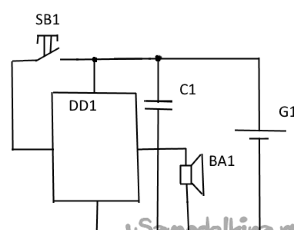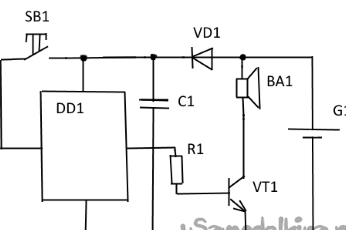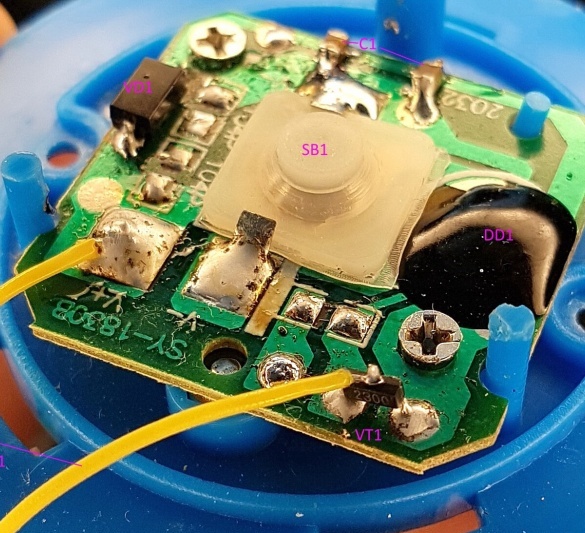I welcome the inhabitants of our sites, as well as everyone who likes to repair do it yourself and takes the first steps inelectronics. The story of how to repair children's audio books. A bit of imagination, time and a few details ...
A little background
For the development of the child, his wife bought several audiobooks. Chad really likes them.

Audiobooks
But after some time the family asked to solve the problem: playback began to stop in random places. And this is in several books. First thought: the battery has run out (CR2032). Replacing the battery with a new situation improved, but, as it turned out, did not solve it completely. Playback stopped, but less often. Could the new batteries have high internal resistance? But it turned out that even if a laboratory power supply was connected instead of a battery, the problem still remained (!). Which was really strange.

Audiobooks
To understand, you need to disassemble

The appearance of the audiobook on both sides

Circuit diagram
The device is very simple. The basis of the entire open-circuit microcircuit DD1 - black blot on the board. Directly connected to it is a speaker with a resistance of 8 ohms and a power of 0.25 watts. Battery power is supplied directly to the chip. On the board, in parallel with the battery, 2 series-connected 100nf ceramic capacitors are connected, which form a capacitor C1 - with a capacity of 50nf. This capacitor must suppress short power pulses. Button SB1 to start playback, and she, to stop.
Capacitor Capacitance Selection C1 upwards did not give any changes. The voltage on the battery during playback decreased slightly, but slightly, so the battery is not overloaded.
Connecting to a laboratory power supply (which can give a current of more than 1A) also did not solve the problem.
After a number of experiments, it turned out that the problem manifests itself if the chip is loaded directly on the speaker. If the load is removed or greatly reduced by turning on a 1kΩ resistor in series, the problem goes away. Of course, we are not talking about normal volume.
The output from the digital microcircuit, the output is something like PWM modulation. It turns out that the problem of the influence of a large load is located inside the microcircuit.
It was decided to separate the power circuit - so you need a separation into a sound source and an output stage. Let's make an output stage on an additional transistor.

Modified circuit using a MOSFET transistor
The N-channel MOSFET transistor SI2300 (VT1), which should open normally even with such a value of the supply voltage. A diode is added to separate the power circuit of the microcircuit. Vd1 - the Schottky SS12 diode was used. Face value C1 taken 10uF. The capacitor should be enough in case of pulsed power drawdowns due to the output stage.
After such a soldering, the problem no longer manifested.
It is not necessary to use a MOSFET. An option using an NPN type bipolar transistor has been tested (tested with 2N2222), but any low-power NPN transistor will do.

Modified circuit using a bipolar transistor
In this circuit, a resistor is added. R1 to limit the base current VT1.
What else
Theoretically, instead of a diode, a few hundred ohms resistor may be sufficient. But this option has not been tested.


